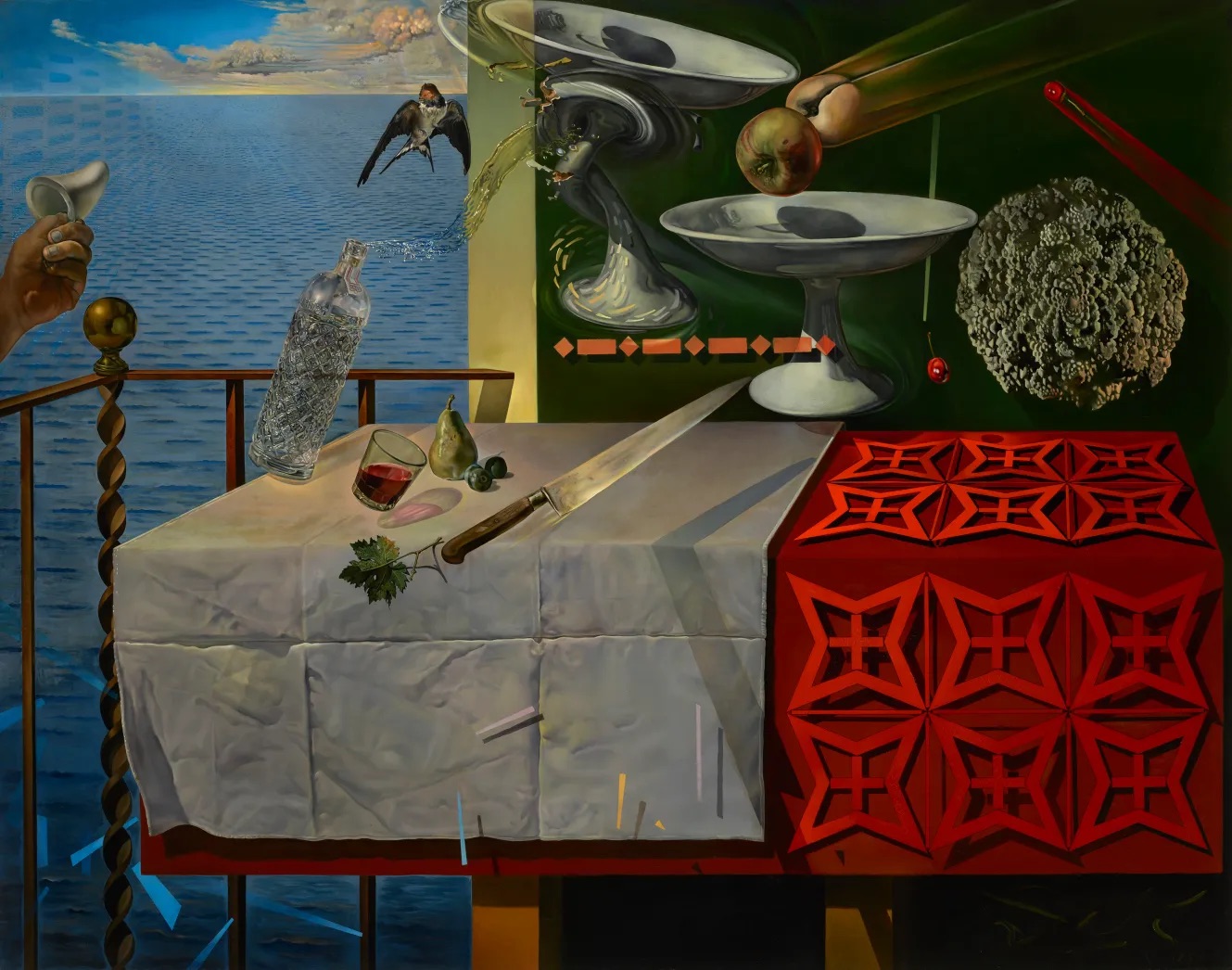
News
HMS Is Facing a Deficit. Under Trump, Some Fear It May Get Worse.

News
Cambridge Police Respond to Three Armed Robberies Over Holiday Weekend

News
What’s Next for Harvard’s Legacy of Slavery Initiative?

News
MassDOT Adds Unpopular Train Layover to Allston I-90 Project in Sudden Reversal

News
Denied Winter Campus Housing, International Students Scramble to Find Alternative Options
‘Dalí: Disruption and Devotion’ Review: Getting to Know Dalí at the Museum of Fine Arts, Boston

It is easy to think of Salvador Dalí as plain weird. The mustachioed Spanish artist, born in 1904, exists in pop culture as a bizarre figure who defied rationalism. This image makes it easy to see his work as standing apart from the stream of art history. The Museum of Fine Arts, Boston challenges this narrative with its current exhibition, “Dalí: Disruption and Devotion.” This collection puts Dalí in context and shows the artist’s connections to different art genres. Through comparison and careful academic framing, the exhibition successfully helps the public get to know Dalí on a deeper level.
The exhibit first places the viewer in front of the small but mighty “The Disintegration of the Persistence of Memory,” a classically surrealist work that merges a landscape with melting clocks, a fish, and floating geometric objects. As the title suggests, the painting reacts to Dalí’s most famous work, “The Persistence of Memory.” This piece’s domination of the opening wall reminds visitors of the most recognizable version of Dalí, but the text introducing the exhibit warns that we should view his work as a part of, instead of unique from, the rest of art history. As the introductory text states, Dalí “disrupted the old to make it new again.” This thought echoes throughout the entire exhibit.
Most of the galleries then go on to show how Dalí’s idiosyncratic style was developed from a variety of influences. The first section, “Fantasy and Nightmare,” explains how the demons and monsters present in his own work drew upon the history of European art, especially 16th-century Netherlandish art. Alongside this comparison, the text explains how Dalí also fostered relationships with his contemporaries, outlining his connection to the Surrealist group and his entrance and expulsion from the San Fernando Royal Academy of Fine Arts. The clash of one of the artist’s first Surrealist paintings, “The First Days of Spring,” with a variety of Netherlandish images, is at first jarring. Yet the wall text invites the viewer to sit with the art and reflect on the similarities between the disparate styles.
The exhibit continues to mine the past in subsequent galleries, looking at Dalí’s homages to Spanish artists and European thought throughout his career. Some of these comparisons are quite direct. His looming “Velázquez Painting the Infanta Margarita with the Lights and Shadows of His Own Glory,” placed alongside a study from Velázquez’s workshop of the Infanta María Teresa in question, shows how his art reflected the greatest paintings of Spanish history. The text accompanying these works stresses the artist’s reverence for Velázquez. Other displays explore how Dalí pushed back against accepted modes of rational thinking and seeing. For example, the description of “Slave Market with the Disappearing Bust of Voltaire” explains Dalí’s distaste for Voltaire’s focus on realism and rationality. This gallery shows that Dalí’s paintings were just as much about their dialogue with art history as their breaking from artistic conventions.
After these comparisons, a timeline in true Dalí fashion takes the viewer off guard in its right-to-left organization. The timeline leads to a gallery illuminating a lesser-known aspect of the artist’s life — his relationship with Catholicism, which blossomed in the 1950s.
Dalí’s images of religious scenes step away from his irreverent and sometimes grotesque style and are touchingly tender. For example, the chalk drawing “Christ in Perspective” literally asks the viewer to reflect on Jesus Christ from a new angle. This section concludes with the looming “The Ecumenical Council,” which stands at nearly 10 feet tall. In the corner of this angelic piece, a self-portrait shows Dalí painting the heavenly scene before him. Through this painting, the viewer is overwhelmed by Dalí’s vision of Catholicism and its wonders. While his iconic surrealist style is still on display, the subject overwhelms his singular wit, and Dalí is cast in a new humble light.
The last section of the exhibit is the most straightforward, which is slightly disappointing after the previous range of detailed comparative work. Still, the final gallery, which covers Dalí’s relationship with “Inexorable Time,” feels poignant since it also narrates the end of the artist’s life. A series of works grappling with death and time — including the classically surreal “Old Age, Adolescence, Infancy (The Three Ages)” — show that these themes followed Dalí throughout his life. The most powerful part of this final room is its conclusive text, which quotes Dalí himself: “My audience mustn’t know whether I’m spoofing or being serious; and likewise, I mustn’t know either…” This note allows visitors to reflect for a moment on all that they have learned, and decide for themselves which version of Dalí they saw the most.
Overall, the exhibition humanizes Dalí by showing how artistic and religious influences transformed his work. The MFA draws upon its deep collection to display how the artist found inspiration in 16th-century still lifes, French philosophy, Spanish Golden Age paintings, and religion. “Dalí: Disruption and Devotion” is a study of how to properly contextualize an artist, and may give those who hesitate to embrace surrealism a way to decode the method behind Dalí’s organized madness.
“Dalí: Disruption and Devotion” will stay on view until Dec. 1, 2024 in the MFA’s Lois B. and Michael K. Torf Gallery.
—Staff writer Hannah E. Gadway can be reached at hannah.gadway@thecrimson.com.
Want to keep up with breaking news? Subscribe to our email newsletter.
